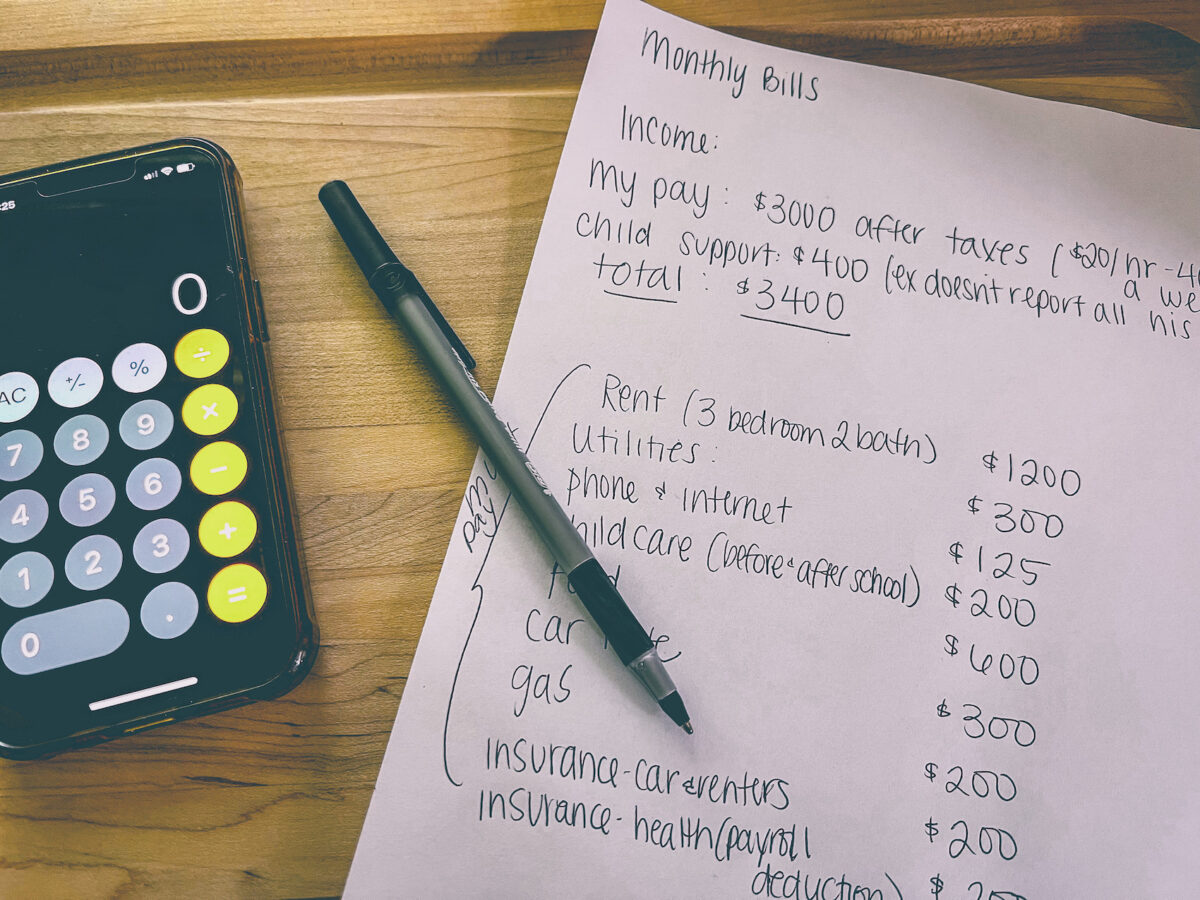Single Mother’s Budget Sheet Goes Viral, Shows How Hard It Is To Get By On $20 An Hour

In the era where social media often presents a skewed image of financial success and luxury lifestyles, a single mother’s candid disclosure of her monthly budget on Facebook has sparked widespread discussion and reflection. With an income that combines her diligent work at $20 per hour, totaling $3,000 after taxes, and $400 in child support—a figure mired by her ex’s underreported earnings—her financial reality tells a story familiar to many but often unseen on social media platforms.
One single Mom’s financial reality
Despite a full-time job, her expenses slightly outpace her income, illustrating the tightrope walk of budgeting for a family on a single income. Her ledger lists a $1,200 rent for a modest 3-bedroom home and $300 for utilities, along with $125 for phone and internet—essential services for work and school. Childcare, even just before and after school, adds another $200 to her monthly outgoings.
Groceries take up $600 of her budget, a figure that hardly speaks to extravagance, but to the cost of feeding a small family. Her car note and gas—essential for commuting to work and ferrying children to activities—total $500. Additionally, the cost of insurance, including car, renters, and health (the latter through a payroll deduction), adds another $400.
This leaves her with a deficit of $325 each month, a gap that countless Americans will recognize in their own lives. The viral spread of her budget has opened up a conversation on the financial struggles of the average American family, challenging the highlight reel of wealth often showcased online and offering a stark counter-narrative to the .1% lifestyle.
A recently divorced woman w/2 children shared her monthly budget sheet on FB & it went viral.
I repost these because it’s perspective on the median & mean. Social media focuses on the fake and the .1%. pic.twitter.com/O6LLmG8kOb
— Don Johnson (@DonMiami3) November 2, 2023
The National Debate: Empathy, Skepticism, and Global Context
The revelation of a single mother’s budget has prompted a wave of reactions across social media, sparking debate on the realities of the cost of living, the adequacy of child support, and the effectiveness of budgeting in today’s economy. Here’s a synthesized look at the varying perspectives:
A sentiment of empathy and astonishment is common among commenters, with many expressing disbelief at the affordability of her housing costs, reflecting regional disparities in living expenses. Remarks like “a 3 bedroom, 2 bath house for $1200 what a steal,” and “That rent is cheap!” suggest a mix of envy and incredulity, underscoring the fact that for many, such living arrangements are a distant dream, particularly in states with higher costs of living like Colorado.
Conversely, skepticism about the authenticity of the budget details also surfaced, with some questioning the plausibility of certain expenses such as the low childcare costs and the seemingly low tax rate. A user’s comment, “This is not a real budget breakdown lol who’s paying $200/month in childcare,” reflects disbelief that the financial struggles portrayed could be genuine, perhaps indicating a disconnect between personal experiences and the varied economic realities across the country.
Some reactions provide an international perspective, with comments like “That cost of living is so low compared to the UK,” highlighting the stark differences in living standards and social safety nets available in different countries. Others point to the grim reality that this budget might be closer to the median American experience than many would like to acknowledge, with statements like “This is roughly the median in America.”
Socioeconomic Reflections and the Pursuit of Stability
Several commenters seized the opportunity to comment on broader social issues, such as the responsibilities of fathers in providing financial support, the adequacy of salaries for survival, and the systemic challenges faced by single parents. For instance, the statement “This is why we need to make it a legal responsibility for men to finance all expenses of mom + kids” reflects a view that the financial burden of raising children should be more equitably distributed.
Furthermore, the budget has revived discussions on the precariousness of living paycheck to paycheck. The story of the woman being one bad illness or car breakdown away from potential homelessness resonates with many and underscores the vulnerability of many working-class families.
Among the more pragmatic responses, suggestions were made about potentially cutting corners, finding additional income streams, or relocating to areas with lower living costs. However, such advice often overlooks the complex realities of finding affordable housing, managing work-life balance, and the availability of jobs that align with an individual’s skills and circumstances.
Based on these social media reactions, the budget sheet serves as a mirror to the economic anxieties pervading American society. The original Facebook post and tweet and its subsequent viral spread have managed to not only provide a snapshot of one woman’s financial challenges but also to ignite a discussion on the authenticity of the portrayal of financial health on social media, the diversity of economic experiences, and the systemic changes needed to address financial insecurity.